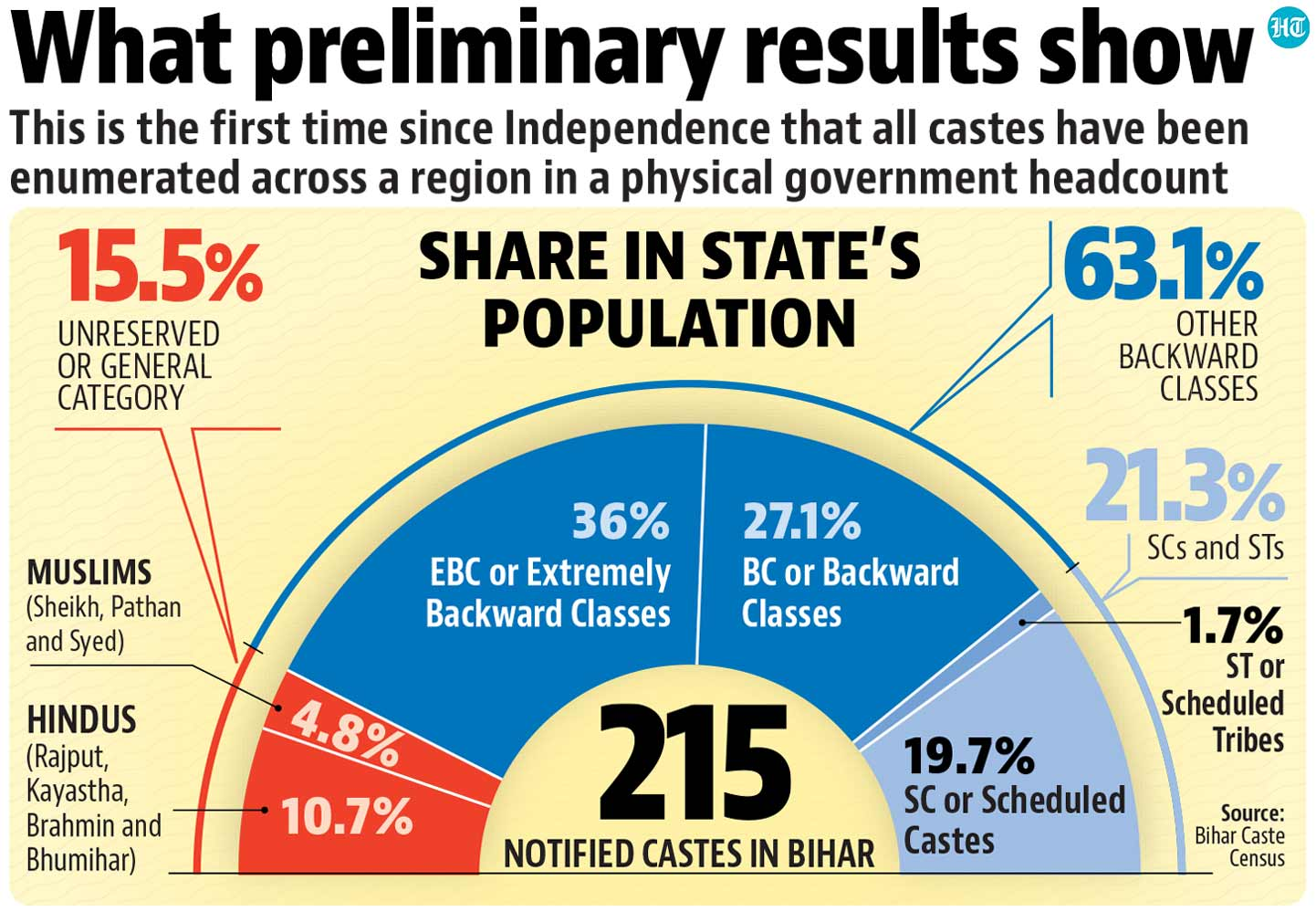Free Courses Sale ends Soon, Get It Now


Free Courses Sale ends Soon, Get It Now



Copyright infringement not intended
Picture Courtesy: www.hindustantimes.com
Context: According to the latest caste survey conducted by the Bihar government, the State has a diverse social composition with more than 63% of its population belonging to the Other Backward Classes (OBCs) and Extremely Backward Classes (EBCs).
Key Highlights of the Survey
|
Implication of the Caste survey data |
|
|
Policy Formulation |
●Political parties are likely to incorporate the findings of the caste survey into their policy formulations and election manifestos. Promises and policies may be tailored to cater to the needs and demands of the predominant caste groups, especially OBCs and EBCs who comprise a significant portion of the population. |
|
Alliance Dynamics |
●Understanding the exact caste composition enables political parties to form strategic alliances. Parties might align themselves with caste-based parties or groups, attempting to consolidate specific caste vote banks to maximize their chances of winning seats. |
|
Candidate Selection |
●The data might influence the selection of candidates for different constituencies. Parties could choose candidates based on their caste backgrounds to appeal to the majority population in those areas. ●Election campaigns might focus on specific issues and promises that resonate with the identified caste groups. Parties could highlight how their policies will benefit these groups, aiming to secure their votes. |
|
Social Welfare Programs |
●The survey data can guide the implementation of social welfare programs. Resources might be allocated based on the demographics, focusing on the upliftment of economically backward sections among the identified castes. |
|
Challenges and Controversies |
●The release of caste-based data can also lead to controversies and challenges. Disputes might arise regarding the accuracy of the data or the methods used for the survey, potentially leading to legal battles or social tensions. |
|
Social Mobilization |
●Various caste groups might mobilize socially and politically based on this data. This mobilization can lead to increased awareness, activism, and demands for social, economic, and political rights. |
|
National Political Impact |
●Bihar's caste dynamics can influence national politics, especially if certain caste-based alliances or issues gain prominence. National parties might align themselves with regional parties based on these caste equations. |
|
Legal and Judicial Impact |
●The data might be used in legal and judicial matters related to reservations and affirmative action, potentially leading to changes in existing policies or the formulation of new ones. |
Conclusion
Must Read Articles:
CASTE-BASED SURVEY IN BIHAR: https://www.iasgyan.in/daily-current-affairs/caste-based-survey-in-bihar
CASTE CENSUS: https://www.iasgyan.in/daily-current-affairs/caste-census-11
CASTE-BASED CENSUS: https://iasgyan.in/daily-current-affairs/caste-based-census
|
PRACTICE QUESTION Q. According to the recent caste survey conducted by the Bihar government, the state's population is composed of diverse social groups, with over 63% belonging to the Other Backward Classes (OBCs) and Extremely Backward Classes (EBCs). Considering the implications highlighted, what challenges and opportunities could arise for political parties and policymakers in light of this demographic information, and how can the state ensure inclusive development and social harmony amid these dynamics? |
© 2024 iasgyan. All right reserved